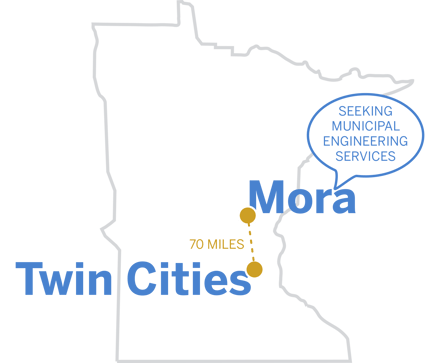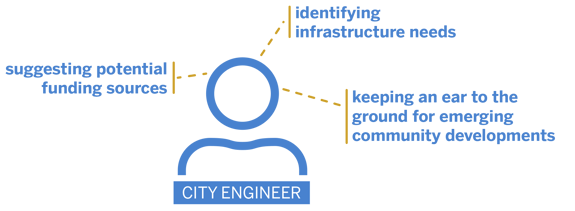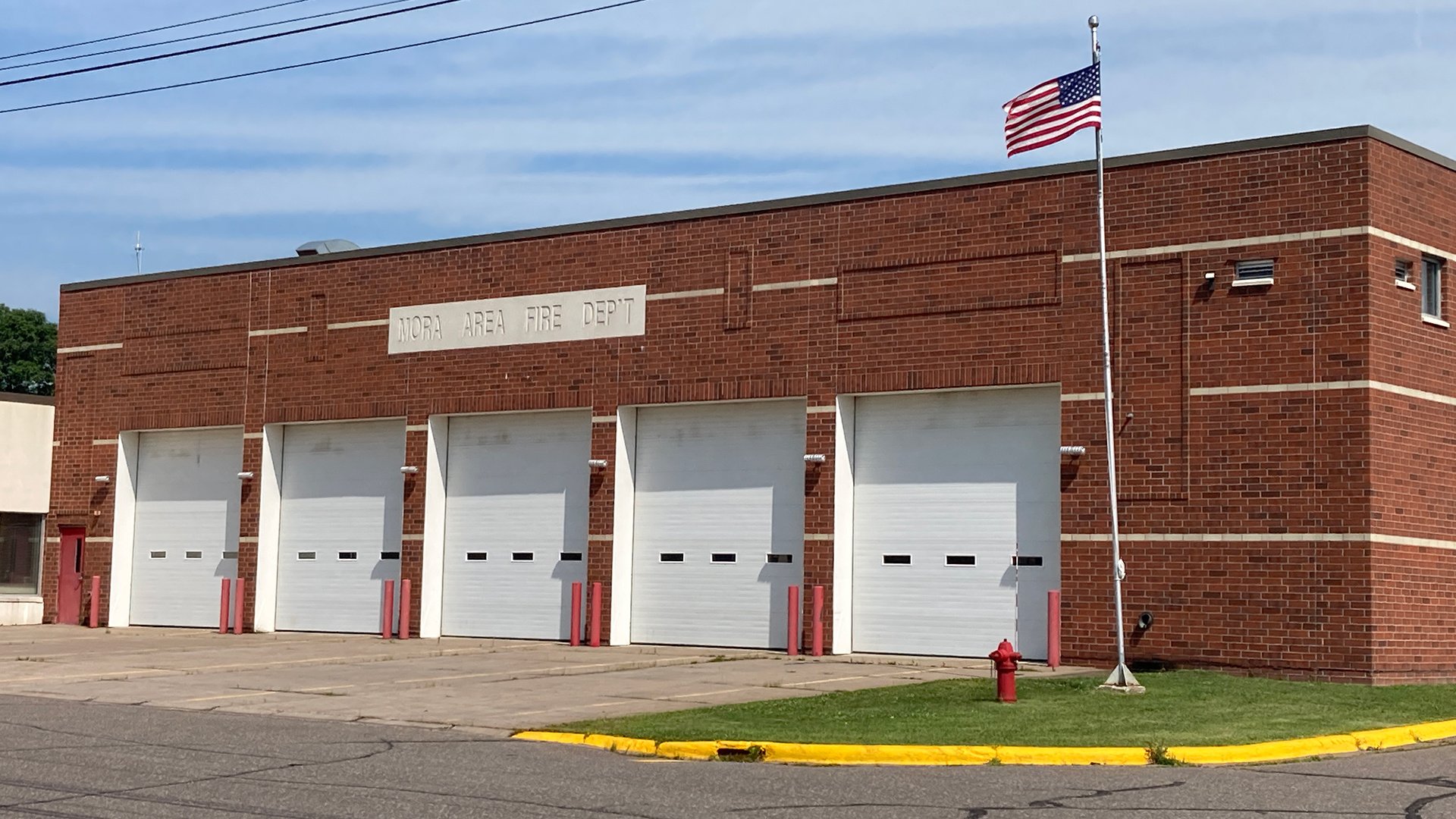A lot can change over the course of 40 years: construction techniques, safety standards, utility systems, the list goes on. But in the City of Mora, Minnesota, one thing that has remained consistent is their engineering firm.
 2024 marks four decades of continued collaboration between the City of Mora and SEH. In the world of city infrastructure and development, lasting partnerships like this are invaluable – offering many benefits that only increase over time.
2024 marks four decades of continued collaboration between the City of Mora and SEH. In the world of city infrastructure and development, lasting partnerships like this are invaluable – offering many benefits that only increase over time.While regulations differ from state to state, in Minnesota, communities without their own engineering staff must have a designated city engineering representative – a vital role serving as both engineer and advocate. For Mora, that appointed City engineer is Greg Anderson. Now, as the City and SEH celebrate their 40th anniversary, Greg shares a few key takeaways on nurturing successful long-term relationships.
In the Beginning
It all started in 1983 when Mora, a community of just over 3,500 people located about 70 miles north of the Twin Cities along the Snake River, was seeking municipal engineering services. After a thorough interview process, the City selected SEH to fulfill this role, with the contract officially beginning in 1984. Mike Kraemer, who would later become SEH’s CEO, was the first person from SEH to act as the appointed engineer. He continued to serve in this position for many years, cultivating the seeds of this long-term bond. When Greg took over for Mike, it was a natural fit. Having grown up in Mora, he was already familiar with the community and ready to continue the journey into the future.

Consistency and Accountability
“I like to see myself as an extension of their staff.”
When it comes to building connections that stand the test of time, consistency is key. It isn't just about showing up; it's about being a constant presence through the changes every city experiences. With city administrators and council members rotating regularly, the city engineer often becomes the reliable presence. This stability allows for a deep understanding of the city's infrastructure development and history, which helps inform each new project.

Accountability goes hand in hand with consistency. For Greg, this means attending evening council meetings and being the first call or email when city staff may need something, whether it's a quick review for the Planning Commission or an estimate on utility costs. Rather than being just a consultant, “I like to see myself as an extension of their staff,” says Greg. This level of accountability builds trust, fosters effective communication, and turns a service provider into a valuable partner in the city's growth and development.
Communicating Clearly
"We'll just call Greg. He remembers when that project went in and what size the pipe is."
More than just providing information, effective communication fosters understanding and assurance at every level. From those monthly council meetings to impromptu calls with staff, each interaction is an opportunity to strengthen bonds and clarify complex concepts. Building this dialogue has helped City leaders in Mora know that when they don’t have the answers, Greg will. He wants them to say, “We'll just call Greg. He remembers when that project went in and what size the pipe is."
Another key part of Greg's communication approach is his one-page project memos, offering quick, digestible updates that keep everyone on the same page, from ongoing projects to final payouts. Timely, straightforward communication also helps navigate challenges when they arise.
Anticipating Needs
Rather than simply reacting to city requests, staying a step ahead is an important component of relationship building. This proactive approach can be applied in various ways, such as suggesting potential funding sources for upcoming projects, identifying infrastructure needs before they become urgent, and keeping an ear to the ground for emerging community developments. The goal is to work seamlessly alongside a city’s operations, often addressing needs before they're directly communicated or causing any issues.

Related content: Ready to Reimagine Your Downtown? 7 Tips to Get Started
Bringing Solutions
"I'm not going to come to you with a problem without options to fix it."
When challenges arise, it’s important to not just identify problems – providing solutions is critical. This action-oriented approach has become a cornerstone of Greg’s work in Mora. "I'm not going to come to you with a problem without options to fix it," Greg emphasizes. Presenting practical options for every obstacle can turn potential setbacks into opportunities for growth and improvement, contributing to a track record of sound, dependable guidance.
Project Highlights
After four decades, the list of projects in Mora is extensive, to say the least. While there are far too many to list here, Greg recollects a few that stand out:


Related content: How to Save Money at Your Wastewater Treatment Plant

Related content: 5 Ways to Engage Stakeholders During Your Airport Project

Each of these projects, and so many more, have contributed to Mora's development, serving as a reminder of the lasting impact of this 40-year collaboration.
Looking Forward
“We should probably shoot for another 40 years, right?”
The relationship between Mora and SEH demonstrates that with a city engineer who provides consistency, clear communication, and solutions that enhance the quality of life for residents, partnerships can truly stand the test of time. More than just a service provider, Greg is honored to be a trusted advisor and help contribute to Mora’s growth and success.
Reflecting on the 40-year journey, Greg summed things up by saying, “We should probably shoot for another 40 years, right?”
Thinking a long-term partnership sounds pretty good? Reach out to connect.
About the Expert

Greg Anderson, PE*, is a principal and senior project manager who specializes in municipal engineering. With more than 29 years in the industry, Greg has served as city engineer for several municipalities and townships in east-central Minnesota. He also has project management experience for municipal and county engineering projects including sanitary sewer, water main, storm sewer, street, and highway design. He understands the importance of educating communities on how their infrastructure works and providing solutions when improvements are needed.
*Registered Professional Engineer in MN

.png?width=113&name=SEH_Logo_RGB%20(1).png)
